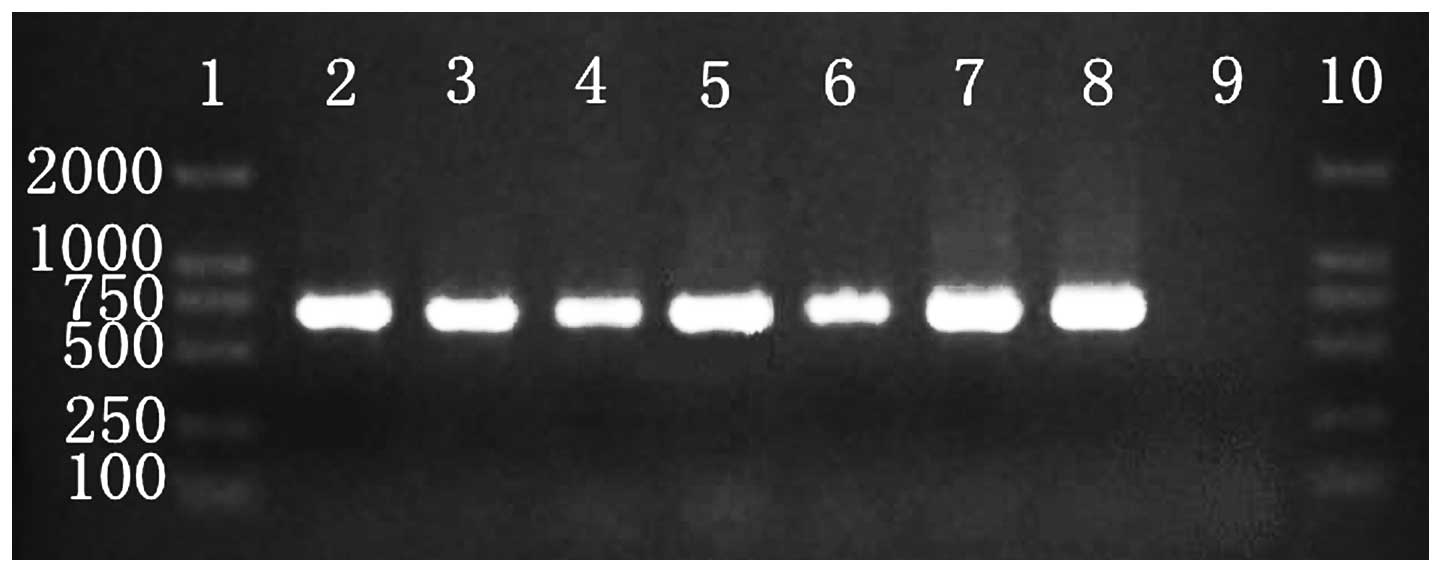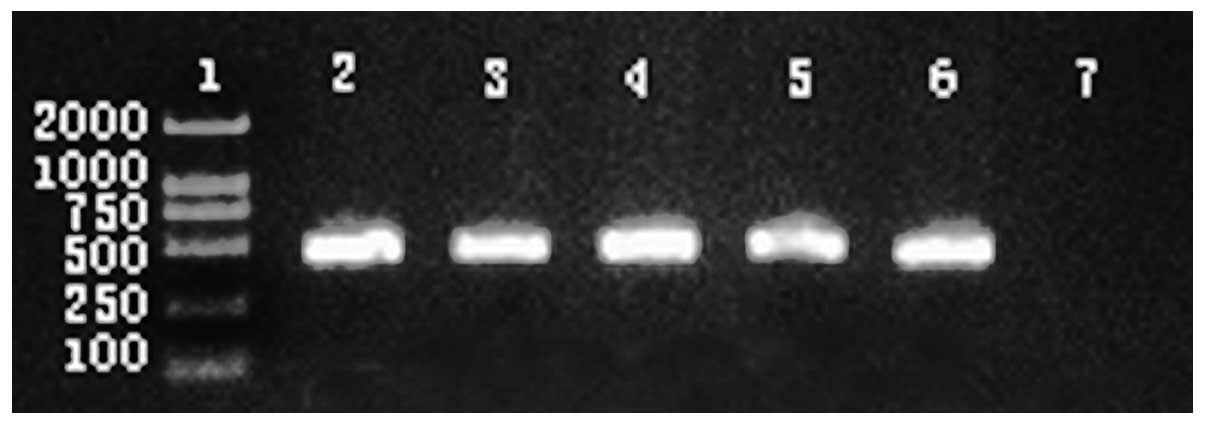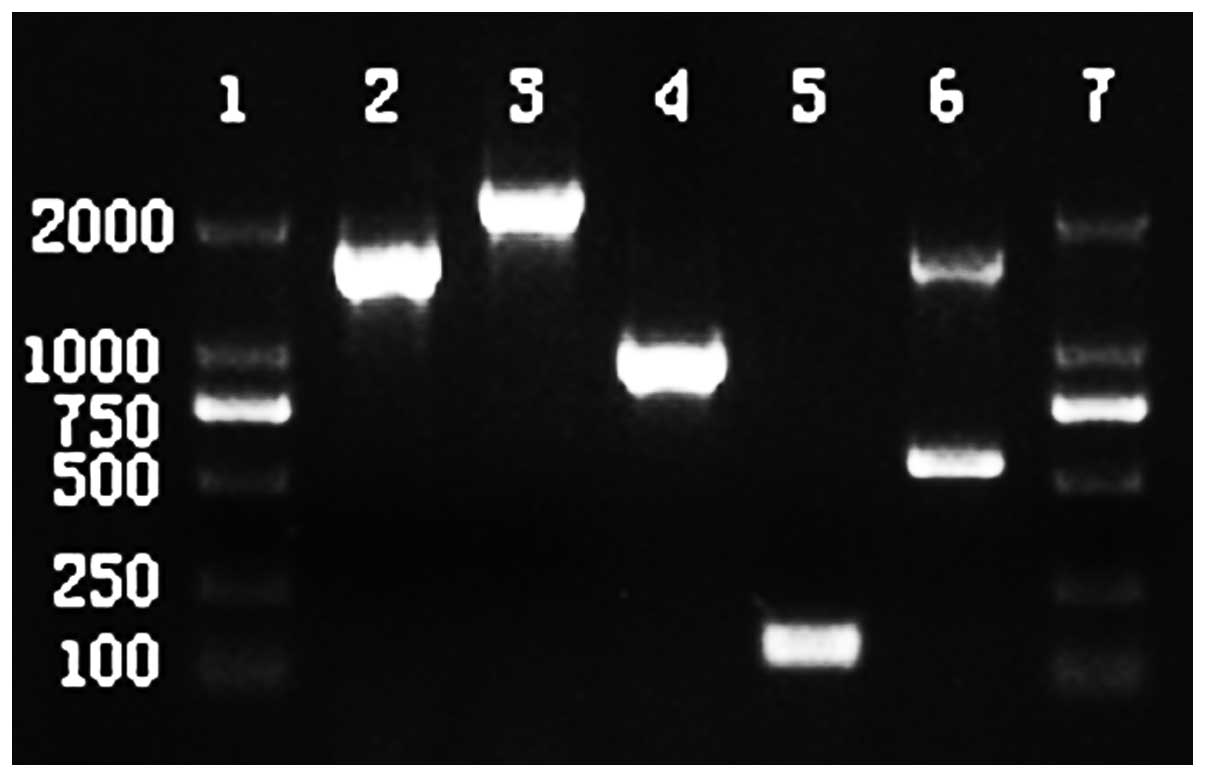|
1
|
Sabharwal ER: Antibiotic susceptibility
patterns of uropathogens in obstetric patients. N Am J Med Sci.
4:316–319. 2012. View Article : Google Scholar : PubMed/NCBI
|
|
2
|
Kang HY, Jeong YS, Oh JY, Tae SH, Choi CH,
Moon DC, Lee WK, Lee YC, Seol SY, Cho DT and Lee JC:
Characterization of antimicrobial resistance and class 1 integrons
found in Escherichia coli isolates from humans and animals
in Korea. J Antimicrob Chemother. 55:639–644. 2005. View Article : Google Scholar : PubMed/NCBI
|
|
3
|
Seputiené V, Povilonis J, Ruzauskas M,
Pavilonis A and Suziedéliené E: Prevalence of trimethoprim
resistance genes in Escherichia coli isolates of human and
animal origin in Lithuania. J Med Microbiol. 59:315–322. 2010.
|
|
4
|
Xiao YH, Giske CG, Wei ZQ, Shen P, Heddini
A and Li LJ: Epidemiology and characteristics of antimicrobial
resistance in China. Drug Resist Updat. 14:236–250. 2011.
View Article : Google Scholar : PubMed/NCBI
|
|
5
|
Jiang HX, Tang D, Liu YH, Zhang XH, Zeng
ZL, Xu L and Hawkey PM: Prevalence and characteristics of
β-lactamase and plasmid-mediated quinolone resistance genes in
Escherichia coli isolated from farmed fish in China. J
Antimicrob Chemother. 67:2350–2253. 2012.
|
|
6
|
Chen YH, Hsueh PR, Badal RE, Hawser SP,
Hoban DJ, Bouchillon SK, Ni Y and Paterson DL: Antimicrobial
susceptibility profiles of aerobic and facultative Gram-negative
bacilli isolated from patients with intra-abdominal infections in
the Asia-Pacific region according to currently established
susceptibility interpretive criteria. J Infect. 62:280–291. 2011.
View Article : Google Scholar
|
|
7
|
Wu H, Liu BG, Liu JH, Pan YS, Yuan L and
Hu GZ: Phenotypic and molecular characterization of CTX-M-14
extended-spectrum β-lactamase and plasmid-mediated ACT-like AmpC
β-lactamase produced by Klebsiella pneumoniae isolates from
chickens in Henan Province, China. Genet Mol Res. 11:3357–3364.
2012.
|
|
8
|
Paterson DL and Bonomo RA:
Extended-spectrum beta-lactamases: a clinical update. Clin
Microbiol Rev. 18:657–686. 2005. View Article : Google Scholar : PubMed/NCBI
|
|
9
|
Han N, Sheng D and Xu H: Role of
Escherichia coli strain subgroups, integrons, and
integron-associated gene cassettes in dissemination of
antimicrobial resistance in aquatic environments of Jinan, China.
Water Sci Technol. 66:2385–2392. 2012.
|
|
10
|
Hall RM: Integrons and gene cassettes:
hotspots of diversity in bacterial genomes. Ann NY Acad Sci.
1267:71–78. 2012. View Article : Google Scholar : PubMed/NCBI
|
|
11
|
Woodford N, Carattoli A, Karisik E,
Underwood A, Ellington MJ and Livermore DM: Complete nucleotide
sequences of plasmids pEK204, pEK499 and pEK516, encoding CTX-M
enzymes in three major Escherichia coli lineages from the
United Kingdom, all belonging to the international O25:H4-ST131
clone. Antimicrob Agents Chemother. 53:4472–4482. 2009. View Article : Google Scholar : PubMed/NCBI
|
|
12
|
Bennett PM: Plasmid encoded antibiotic
resistance: acquisition and transfer of antibiotic resistance genes
in bacteria. Br J Pharmacol. 153(Suppl 1): S347–S357. 2008.
View Article : Google Scholar : PubMed/NCBI
|
|
13
|
Guérin E, Jové T, Tabesse A, Mazel D and
Ploy MC: High-level gene cassette transcription prevents integrase
expression in class 1 integrons. J Bacteriol. 193:5675–5682.
2011.PubMed/NCBI
|
|
14
|
van Essen-Zandbergen A, Smith H, Veldman K
and Mevius D: Occurrence and characteristics of class 1, 2 and 3
integrons in Escherichia coli, Salmonella and
Campylobacter spp. in the Netherlands. J Antimicrob
Chemother. 59:746–750. 2007.PubMed/NCBI
|
|
15
|
Nardelli M, Scalzo PM, Ramírez MS, Quiroga
MP, Cassini MH and Centrón D: Class 1 integrons in environments
with different degrees of urbanization. PLoS One. 7:e392232012.
View Article : Google Scholar : PubMed/NCBI
|
|
16
|
Clinical and Laboratory Standards
Institute. Performance standards for antimicrobial susceptibility
testing standards: nineteenth informational supplement M100-S19.
2009 Accessed January, 2013
|
|
17
|
Wu LT, Tsou MF, Wu HJ, Chen HE, Chuang YC
and Yu WL: Survey of CTX-M-3 extended-spectrum beta-lactamase
(ESBL) among cefotaxime-resistant Serratia marcescens at a
medical center in middle Taiwan. Diagn Microbiol Infect Dis.
49:125–129. 2004. View Article : Google Scholar : PubMed/NCBI
|
|
18
|
Costa D, Poeta P, Sáenz Y, Coelho AC,
Matos M, Vinué L, Rodrigues J and Torres C: Prevalence of
antimicrobial resistance and resistance genes in faecal
Escherichia coli isolates recovered from healthy pets. Vet
Microbiol. 127:97–105. 2008. View Article : Google Scholar : PubMed/NCBI
|
|
19
|
Hsu SC, Chiu TH, Pang JC, Hsuan-Yuan CH,
Chang GN and Tsen HY: Characterisation of antimicrobial resistance
patterns and class 1 integrons among Escherichia coli and
Salmonella enterica serovar Choleraesuis strains
isolated from humans and swine in Taiwan. Int J Antimicrob Agents.
27:383–391. 2006. View Article : Google Scholar : PubMed/NCBI
|
|
20
|
Wu S, Dalsgaard A, Hammerum AM, Porsbo LJ
and Jensen LB: Prevalence and characterization of plasmids carrying
sulfonamide resistance genes among Escherichia coli from
pigs, pig carcasses and human. Acta Vet Scand. 52:472010.
View Article : Google Scholar : PubMed/NCBI
|
|
21
|
Lim KT, Yasin R, Yeo CC, Puthucheary S and
Thong KL: Characterization of multidrug resistant ESBL-producing
Escherichia coli isolates from hospitals in Malaysia. J
Biomed Biotechnol. 2009:1656372009.PubMed/NCBI
|
|
22
|
Yang CM, Lin MF, Lin CH, Huang YT, Hsu CT
and Liou ML: Characterization of antimicrobial resistance patterns
and integrons in human fecal Escherichia coli in Taiwan. Jpn
J Infect Dis. 62:177–181. 2009.PubMed/NCBI
|
|
23
|
Ozgumus OB, Celik-Sevim E, Alpay-Karaoglu
S, Sandalli C and Sevim A: Molecular characterization of antibiotic
resistant Escherichia coli strains isolated from tap and
spring waters in a coastal region in Turkey. J Microbiol.
45:379–387. 2007.PubMed/NCBI
|
|
24
|
Birgy A, Cohen R, Levy C, Bidet P,
Courroux C, Benani M, Thollot F and Bingen E: Community faecal
carriage of extended-spectrum beta-lactamase-producing
Enterobacteriaceae in french children. BMC Infect Dis. 12:3152012.
View Article : Google Scholar : PubMed/NCBI
|
|
25
|
Ramirez MS, Parenteau TR, Centron D and
Tolmasky ME: Functional characterization of Tn1331 gene cassettes.
J Antimicrob Chemother. 62:669–673. 2008. View Article : Google Scholar : PubMed/NCBI
|
|
26
|
Bennett PM: Integrons and gene cassettes:
a genetic construction kit for bacteria. J Antimicrob Chemother.
43:1–4. 1999. View Article : Google Scholar : PubMed/NCBI
|












